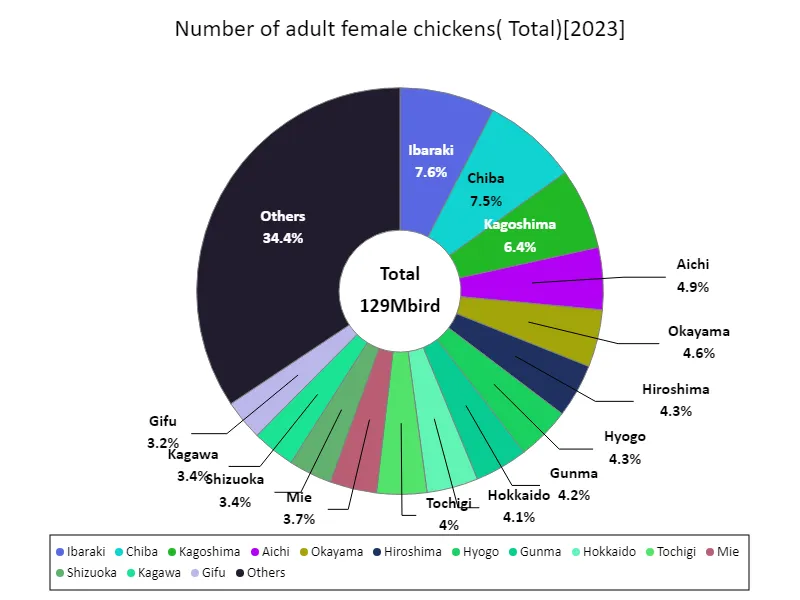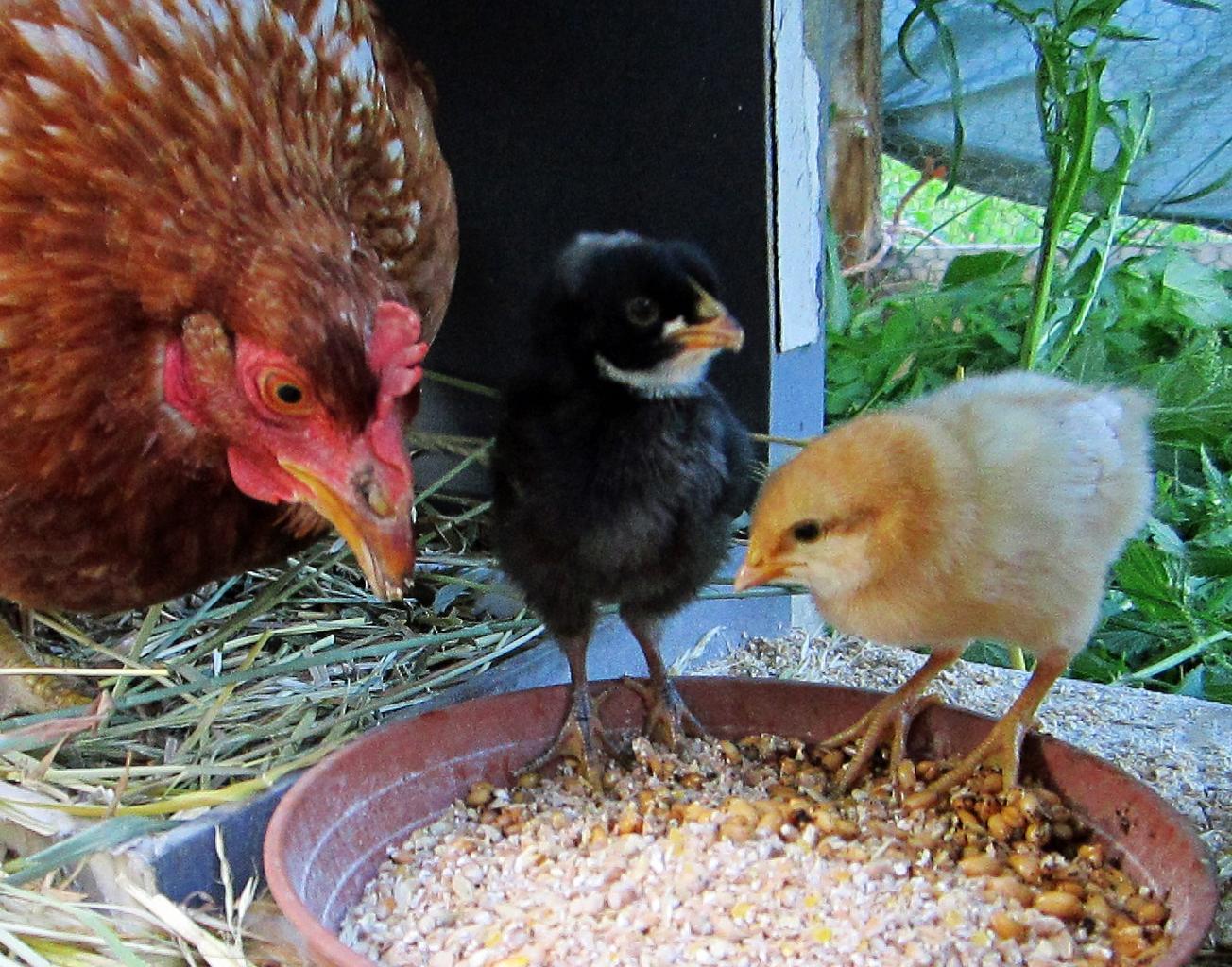Abstract
Chicken raising occupies an important part of Japan’s livestock industry. According to statistics from 2023, the number of chickens raised nationwide reached a maximum of 129 million. This number is made up of farms with over 500,000 birds as the main producers, with farms with 100,000-499,999 birds also playing an important role. Based on past trends, the number of chickens being raised is on the rise. This is thought to be due to increased demand and the development of the food industry. Chicken farming is carried out on a wide range of farms, from relatively small scale to large scale, and there are differences in farming methods and feed depending on the region. This diversity is one of the characteristics of Japan’s livestock industry.
Number of laying hens
Chicken raising has a long history in Japanese agriculture and the statistics are interesting. Looking at data from 1962 to 2023, the number of chickens kept fluctuates. In 1994, the population nationwide reached a record peak of 147 million birds, but has been declining slightly since then. The current number of animals kept is 87.5% of its peak. This decline is likely due to structural changes in agriculture and changes in consumer demand. For example, with dietary diversification and increased health consciousness, there may be an increased demand for other types of protein sources. On the other hand, chicken farming remains important, with demand for high-quality eggs and chicken meat remaining stable. With the introduction of sustainable farming methods and efficient production technologies, it is hoped that the number of chickens being raised will stabilize and even increase again.


The maximum is 147Mbird[1994] of Japan, and the current value is about 87.5%
Number of laying hens kept (total) (prefectures, latest year)
It is interesting to note that the number of chickens raised in Ibaraki Prefecture in 2023 will reach a record peak of 9.73 million, the highest in the country. The fact that the number of chickens being raised in Ibaraki has reached 100% of its peak suggests the stability of the local livestock industry. This outcome may reflect the high demand in the market for chicken products such as chicken meat and eggs from Ibaraki Prefecture. It is also possible that Ibaraki Prefecture’s agricultural policies and the efforts of livestock producers have improved the efficiency and sustainability of chicken farming. These trends are positive for the region’s economic development and food security. It is expected that Ibaraki Prefecture’s livestock industry will continue to contribute to the local economy and work to practice sustainable agriculture.


The maximum is 9.73Mbird of Ibaraki, the average is 2.73Mbird, and the total is 129Mbird
Number of laying hens (over 500,000)
The livestock statistics for Japan’s chicken population of over 500,000 in 2022 are interesting. The number of chickens raised nationwide reached 48.8 million, compared with an average of 9.62 million and a total of 164 million. This figure shows the importance of chickens to Japan’s livestock industry. In recent years, the demand for chicken meat and eggs has increased, and livestock producers are increasing production. Additionally, chicken farming varies widely from relatively small scale to large scale farms, with production volumes differing from region to region. This trend is contributing to the diversification of Japan’s agriculture and the revitalization of local economies. As part of sustainable agriculture, chicken farming continues to see efforts to improve efficiency and hygiene standards. It is hoped that these efforts will support the growth and stability of the chicken livestock industry in the future.


The maximum is 6.14Mbird of Ibaraki, the average is 3.97Mbird, and the total is 15.9Mbird
Number of laying hens (100,000 to 499,999)
The statistics for the number of adult chickens in Japanese agriculture in 2022, by farm size, ranging from 100,000 to 499,999, are noteworthy. The number of birds kept nationwide reached a peak of 60.4 million, the highest figure to date. This figure suggests that medium-sized livestock farmers are focusing on chicken rearing. The 100,000-499,999 bird scale, while relatively small compared to the large scale, has a significant market share. Farms of this size play an important role in the local economy as they have the flexibility to adjust production to meet local demand. Farms of this size also strive for both productivity and quality, including sustainable agricultural practices and adherence to hygiene standards. The efforts of these medium-scale farms are contributing to the stability of the supply of chicken meat and eggs in Japan and improving their quality. Going forward, the growth and support of medium-scale farmers will likely remain essential for the sustainability and development of agriculture in Japan.


The maximum is 4.11Mbird of Aichi, the average is 2.07Mbird, and the total is 53.7Mbird



Comments